Seventh-Generation BMW 5 Series Updated For 2021 – BimmerLife
Some people were a bit nervous about the impending 5 Series facelift. It may be hard to believe it, but the G30 generation of the BMW 5 Series has been in production since November of 2016, and that means we’re right on schedule for the mid-lifecycle refresh we’ve come to expect. Why were people nervous you might ask? Just look at the 7 Series, which was updated for the 2020 model year.
The 7 Series LCI, as BMW calls it (lifecycle impulse, if you’re curious) included a front end redesign which saw BMW’s newest design theme—rather large kidney grilles—featured as the centerpiece. Already an excellent car and perhaps the best 7 Series yet in terms of performance, capability, and technology, the G11 7 Series LCI was seen as just another step in the wrong direction, after the unveiling of the X7 SAV. The X7 has gone on to sell well despite wearing the largest kidney grille ever put on a production BMW model, and design continuity between its sedan counterpart makes sense.
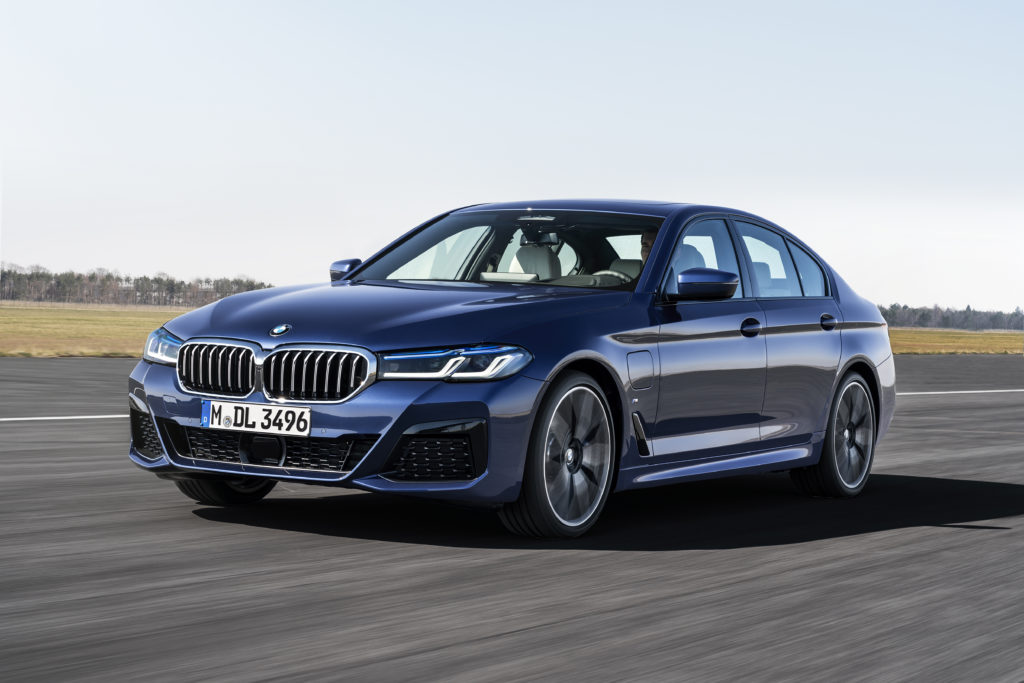
Thankfully, it seems tBMW erred on the side of caution with the G30 5 Series LCI, in going with a significantly more conservative styling update. There’s some logic to this, considering the 5 Series has long occupied the mid-size executive sedan segment of the BMW lineup, and that the modern X7 and 7 Series buyer is perhaps a bit more appreciative of the flash and presence of those models as opposed to the days of the E38.
Either way, the updated 5 Series looks as stately (perhaps even understated) and as capable as ever, and both notions are confirmed when looking at the updated specs and tech. First off, it should be noted that the G30 5 Series LCI includes a standard drivetrain addition for all models which takes the form of a 48-volt mild hybrid system. Whether you’re looking at the B48 four-cylinder-powered 530i, the B58 six-cylinder 540i, or the N63 V8 M550i, all of these cars now come standard with a 48-volt system that will surely add at least a few mpg to their respective fuel economy ratings.
This mild hybrid system isn’t the sort of invasive setup of a conventional hybrid, in which the front axle might be powered by its own dedicated electric motor (or perhaps a pair). According to Car and Driver, you’ll still be able to buy rear-drive versions of these cars, while xDrive will be offered optionally. This means the standard hybrid system probably won’t have too much to say in terms of the driving experience itself.
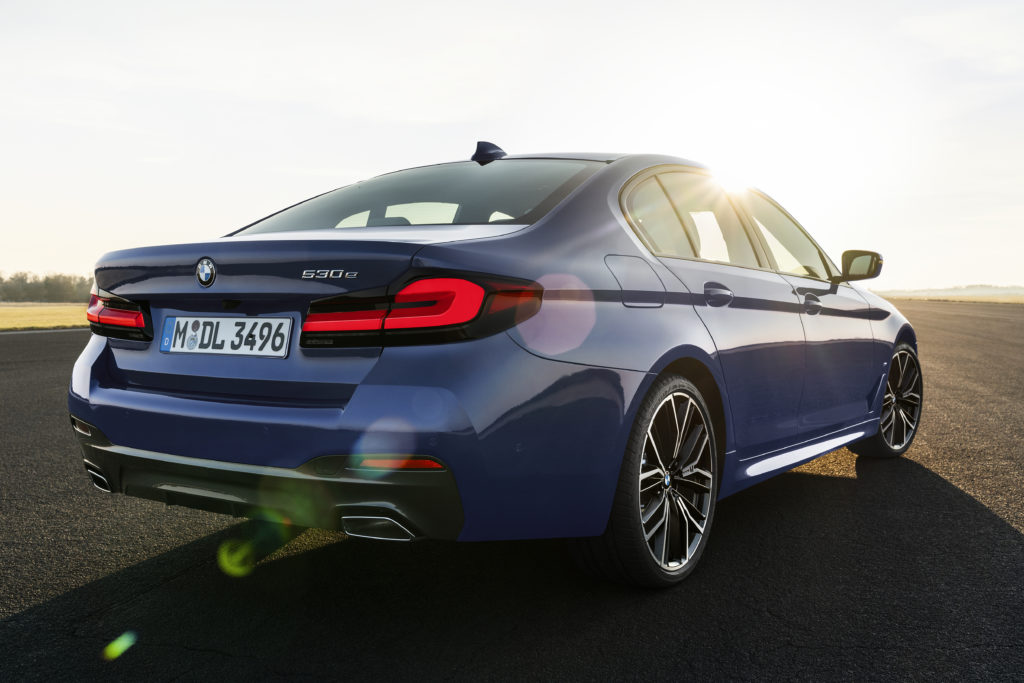
If you’re looking for the full hybrid, BMW will soon be selling an updated G30 530e. Like the G20 330e, the new 530e will have more power at its disposal than its predecessor—288 horsepower as opposed to 248 between the electric motor and the B48 four-cylinder, but all-electric range and real world test results are still a ways out. That gain comes from the electric motor, which is integrated with the ZF eight-speed automatic transmission. Like the gasoline mild-hybrid models, the 530e can be had with xDrive, but it will almost certainly translate to a decline in fuel economy. Speaking of efficiency, BMW quotes the G30 5 Series LCI has having a drag coefficient as low as 0.27, not quite as slippery as the previous previous G30 520d (0.22) model, which was never sold here in the U.S.
The interior isn’t radically revamped, but there are a few important changes, like the adoption of BMW’s Live Cockpit Professional infotainment setup which uses a fully-digital gauge cluster and an enlarged iDrive screen. Interfaces, controls (both tactile and not), and driver assistance systems have been upgraded across the board to the latest BMW standard already present on other vehicles like the 3 Series, 7 Series, X5, and X7, to name a few. Visually speaking, it all comes together in a cohesive fashion, with BMW choosing to stick with mild changes like different stitching and other small but noticeable elements. One rule we’ve come to adopt over the last few generations of 5 Series is to opt for the upgraded seats, which allow the mid-size executive sedan to rival the comfort of the 7 Series over longer journeys.
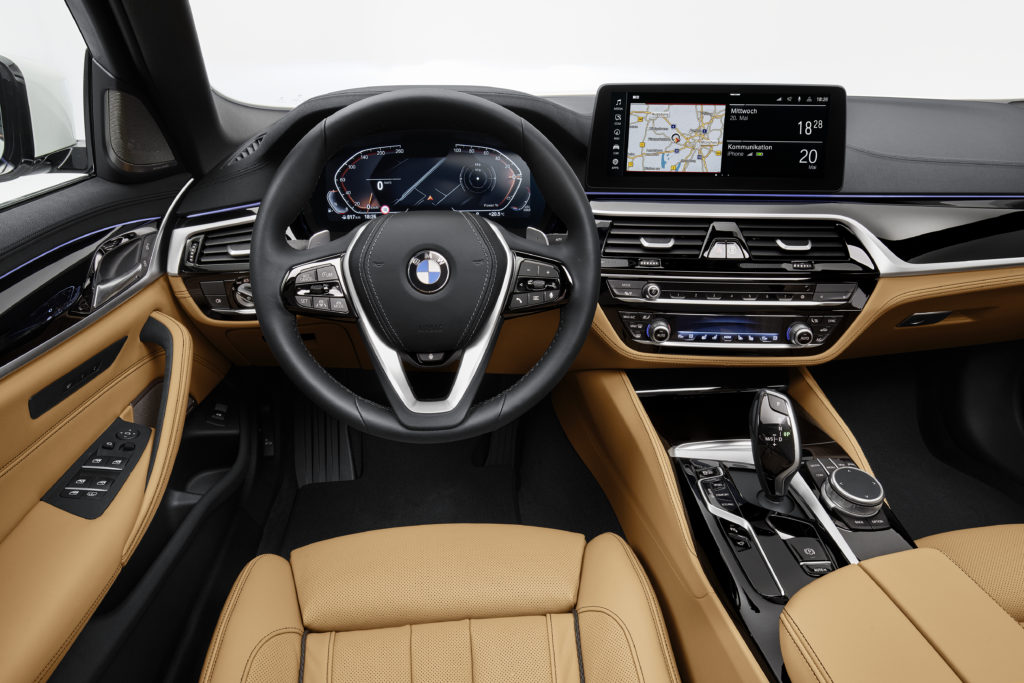
Thinking about the kidney grilles once again, you can find the before and after shots comparing the LCI to the original G30 5 Series below. There’s no doubt the kidney grilles have grown significantly. They take up more of the front clip than before, and seem to have their way in terms of dominating the presence of the headlights—which have also been updated by way of sharp, angular LED bars.
Get ready though, because the new BMW 4 Series coupe is due to be unveiled next week.
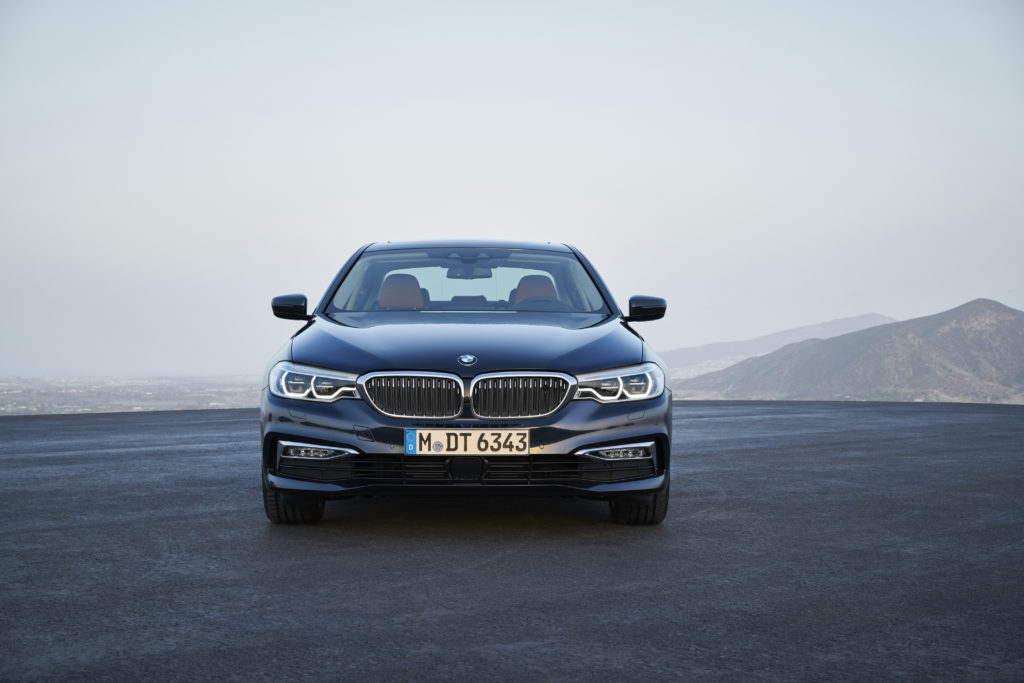
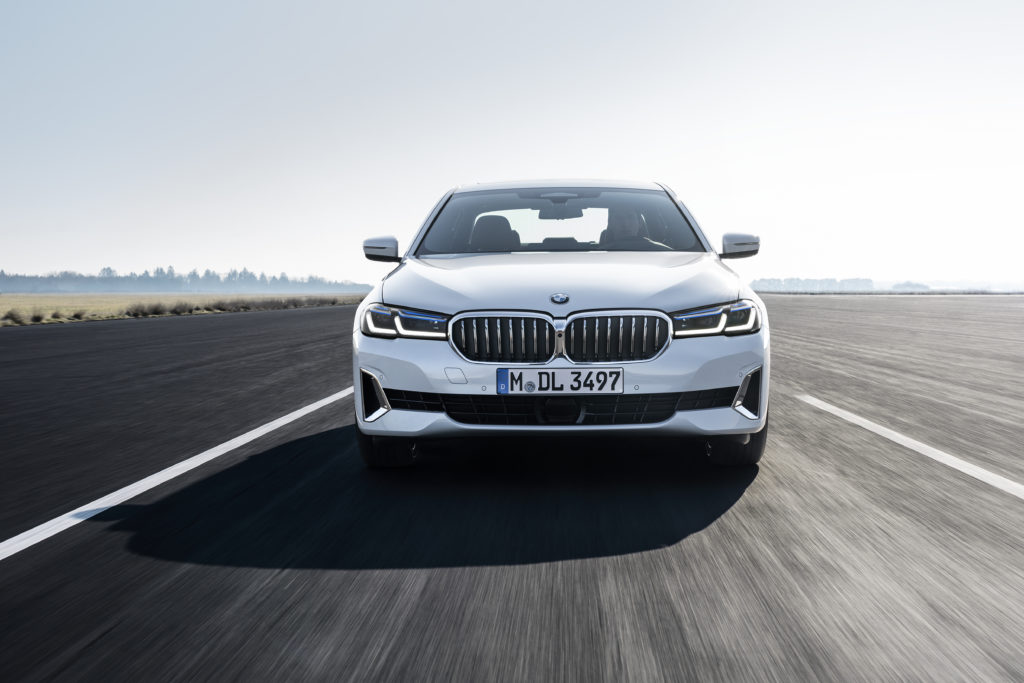
The expanded use of LED lighting is continued on the rear end, where it looks quite nice on a 530e wearing M Sport trim. Lighting is one area we always look forward to with a BMW mid-lifecycle update, as they always manage to make things look just that much sharper.

The BMW 5 Series competes with the likes of perennial foes like the Audi A6 and Mercedes-Benz E-Class, though on the performance front, it’s been noted (by Car and Driver) that the M550i outperforms the Mercedes-AMG E53, both of which swing in a class below that of the M5 and fully-fledged AMG cars.
The updated 5 Series is scheduled to arrive on dealer lots starting July of this year, but which model should you buy? For 20 years now, the best bet has been the six cylinder, in this case, the 540i. Running the latest and greatest BMW inline-six—the B58—which is no slouch on its own, it’s hard to find a better balance of performance, economy, and versatility. It doesn’t suffer from the reduced trunk space of the 530e (which still comes with fold-down seats in its defense) and still offers respectable acceleration. For the long term owner, six-cylinder 5 Series models from the E39 onward have proven among the longest lasting of the model lineups, and even in the turbo era, this doesn’t seem to have changed much.—Alex Tock
[Photos courtesy BMW AG.]






